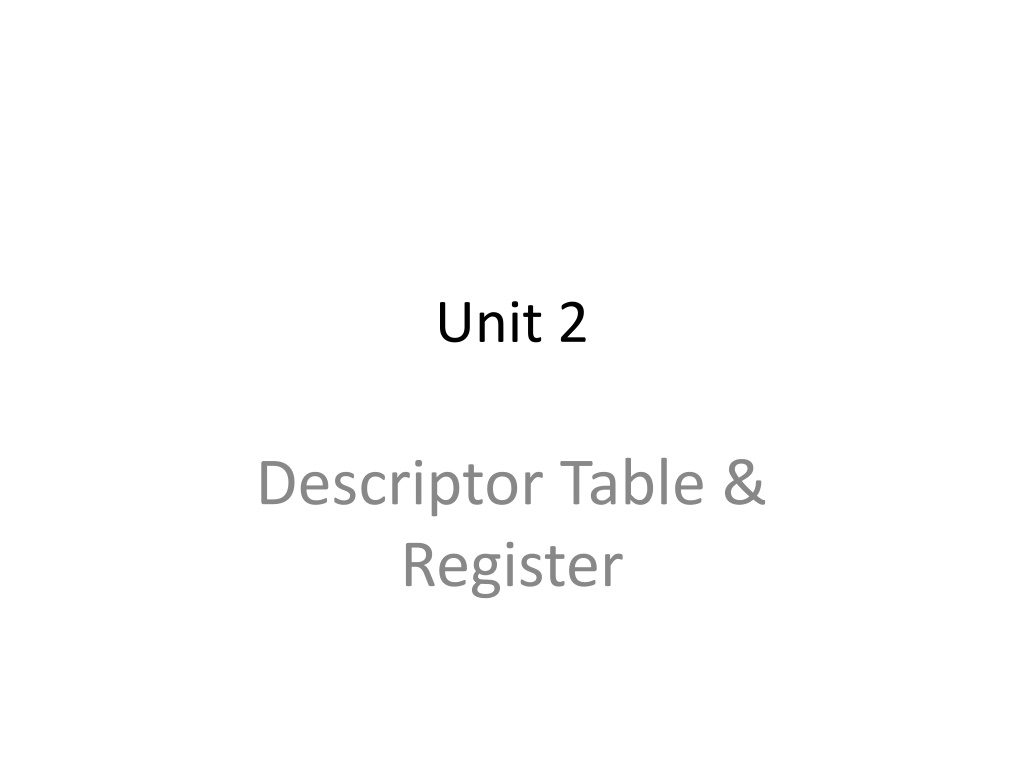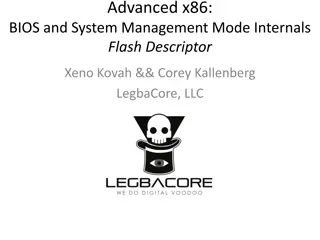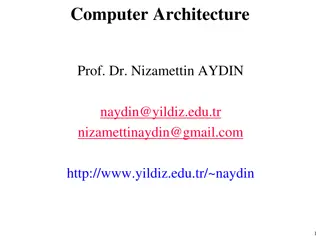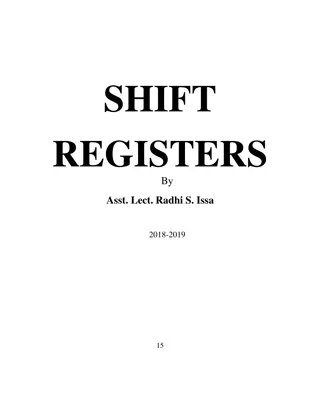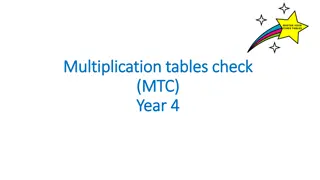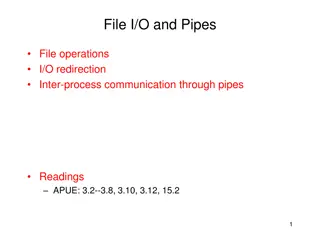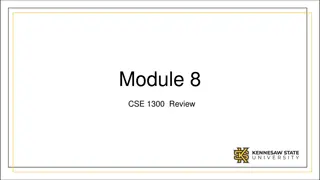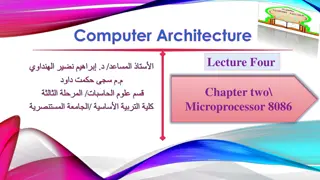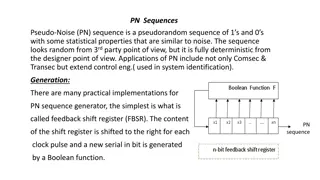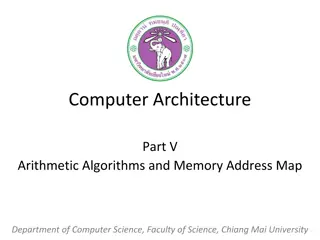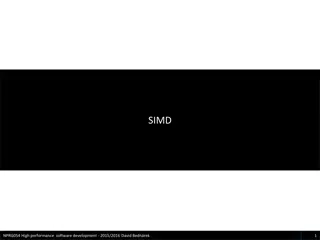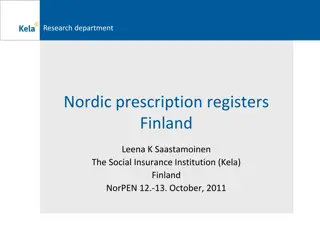Understanding Descriptor Tables and Registers in Computer Systems
Descriptor tables in computer systems group segment descriptors together for efficient memory management. They consist of Global Descriptor Table (GDT), Local Descriptor Table (LDT), and Interrupt Descriptor Table (IDT). The Global Descriptor Table (GDT) is a crucial table that is shared by all programs to reference memory segments. On the other hand, the Local Descriptor Table (LDT) provides task-specific memory access. The system utilizes Global Descriptor Table Register (GDTR) and Global Descriptor Table Register (GDTR) to manage these tables effectively. Proper understanding of these tables and registers is essential for optimizing memory usage in computer systems.
Download Presentation

Please find below an Image/Link to download the presentation.
The content on the website is provided AS IS for your information and personal use only. It may not be sold, licensed, or shared on other websites without obtaining consent from the author. Download presentation by click this link. If you encounter any issues during the download, it is possible that the publisher has removed the file from their server.
E N D
Presentation Transcript
Unit 2 Descriptor Table & Register
Descriptor tables The segment descriptors are grouped together and placed in a continuous memory location and this group arrangement is known as descriptor tables . Each descriptor requires 8 bytes in order to store the data of particular segment. Total descriptors =8192 and Max length(Size) =64KB. E.g: 65535 bytes There are 3 types of descriptor tables. 1)GDT 2) LDT 3) IDT
Global Descriptor Table (GDT) Main table & most important one The same GDT can be used by all programs to refer to the segment of memory. 80386 processor in protected mode can have many LDT s but only one GDT. It may contain special system descriptors.
Global Descriptor Table Register (GDTR) and GDT
Global Descriptor Table Register (GDTR) 48 bit register. Used to point GDT. Divided into two components viz. Base and limit. Base value( 32 bit) indicates the starting address of GDT. Limit value(16 bit) indicates the size of GDT. Used by OS only(GDTR). Initialized in real mode. Defines characteristics of global address space. It has no cache register.
16 15 0 47 BASE LIMIT LIMIT -> 16 bit field. Indicates the length of GDT in terms of bytes . The maximum size of GDT is 65536 bytes. Limit = Size -1 e.g. if LIMIT = 00FF H then size of GDT = 256 bytes BASE -> 32 bit field. Gives 32 bit physical starting address of GDT.
Local Descriptor Table (LDT) Multitasking system is defined on a per task basis. Each task can have access to own private descriptor table(LDT) in addition to GDT. It can also be shared with other tasks. Each task can have its own segment of local memory. So there may be many LDT s in protected mode, say LDT-0 to LDT-n. It can be smaller or larger than the GDT Function: Expand the total number of available descriptors.
Local Descriptor Table (LDT) The LDT is also called as private table which defines a local memory address space for use by the task. Contains descriptors that provide access to code and data in segments of memory. for loading the value in the GDTR, LDTR, IDTR the 80386 provides the instructions LGDT, LLDT, LIDT. Similarly for storing we have SGDT, SLDT and SIDT
Local Descriptor Table Register (LDTR) 16 bit register. Used as a local selector. Points LDT descriptor stored in GDT. GDT contains many LDT descriptors. Each LDT has LDT descriptor in GDT. Points only one LDT descriptor at a time. Used to change LDT. Provides 48 bit cache register. A 48 bit cache register is used to hold current LDT descriptor.
LDTR Lower 3 bits are always zeros. Upper 13 bits are used as Index Value Index value is multiplied by 8 and added into base address stored in GDTR. Physical Address of LDT descriptor in GDT = Base address in GDTR + (Index value 8). 15 3 2 0 13 bit Index Value 0 0 0
LDTR CACHE REGISTER This Register is not available for user. It holds LDT descriptor of current LDT. Base address is the physical address of LDT. Limit indicates the size of LDT. Limit = Size -1 Access right provides protection mechanism. Access Right 32 BIT BASE Address of LDT 16 BIT LIMIT
Interrupt Descriptor Table (IDT) Holds the descriptors that are used 1. Trap Gate Descriptor 2. Interrupt Gate Descriptor 3. Task Gate Descriptor The user program can never select a descriptor in IDT like GDT or the LDT It Maintains ISR The default value that 80386 loads into IDTR as Base address=0, Limit = 03FFH
Interrupt Descriptor Table (IDT) Interrupt Descriptor Table (IDT) Defines interrupt & Exception handling. IDT can also be up to 64KB But 386 only supports up to 256 interrupts and exceptions(2KB). One for each interrupt vector. 255 Interrupt Descriptor Table (IDT) Interrupt Descriptor Table Register(IDTR) MAX: 2k bytes 256 entries 16 15 47 0 LIMIT BASE 1 0
Interrupt Descriptor Table Rgeister (IDTR) 48 bit register. Points IDT. Divided into two components viz. Base and limit. Base value( 32 bit) indicates the starting address of IDT. Limit value(16 bit) indicates the size of IDT. Used by interrupts and exceptions only. ISRs are invoked via IDT. It has no cache register. The descriptors used in the IDT are called as interrupt gates which gives the beginning of an interrupt-service routine(ISR).
IDTR Base address is the physical address of IDT. Limit value indicates the size of IDT. Limit = Size 1. The maximum size of IDT is 256 8 15 47 16 0 Limit 16 bit 32 bit Base address of IDT Not more than 256*8-1
Interrupt Descriptor Table Register (IDTR) and IDT
